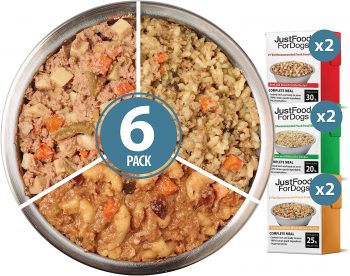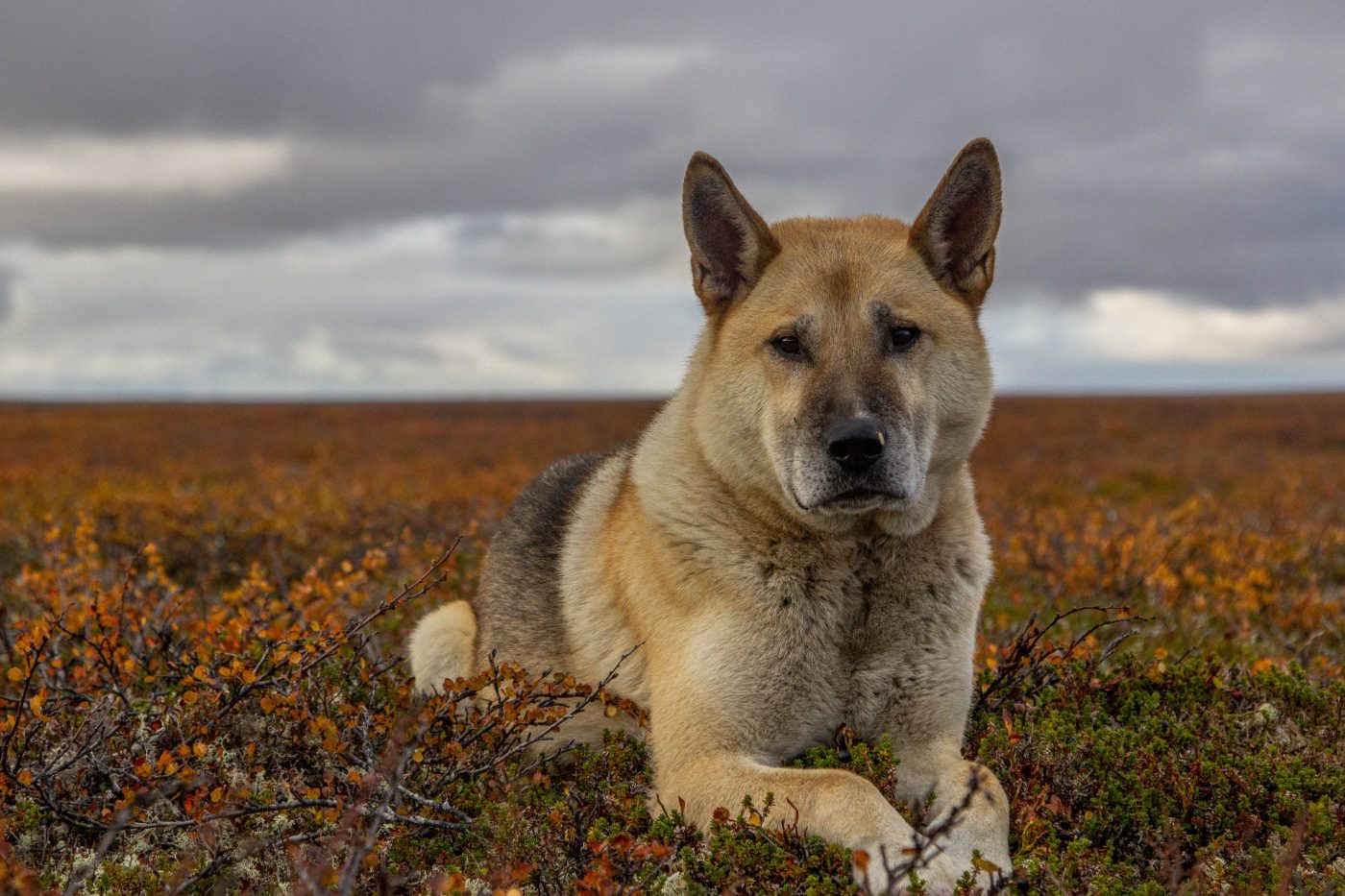Akitas are powerful, independent, and dominant dogs with origins in Japan. These traits extend to their dietary needs, which should be met with the same precision and care that Akitas demands in their training and daily life.
1. Understanding Akita’s Nutritional Needs
The Akita is a large breed, which comes with a greater demand for proper nutrition to support its size and energy levels. Their diet should be rich in proteins and fats to sustain their muscular physique and dense coat, with carbohydrates sourced from vegetables and whole grains for energy.
2. Daily Caloric Intake
An Akita’s daily caloric intake varies based on their age, size, activity level, and metabolism. Adult Akitas usually require about 30 calories per pound of body weight, but this can fluctuate. An active Akita could need more, while a senior or less active Akita may require less.
3. Puppy Feeding Regimen
Akita puppies grow quickly and need more nutrients and calories per pound of body weight compared to adult dogs. It’s essential to feed them a high-quality puppy formula that supports their development, split into three to four meals a day.
4. Adult Akita Feeding Schedule
Transition to adult food should occur around 18 months of age for Akitas. At this stage, feeding twice a day is optimal to maintain their digestive health and energy levels.
5. Measuring Your Akita’s Food
Approximate feeding amounts for Akitas can range from 3 to 5 cups of dry dog food per day, divided into two meals. This should be adjusted based on the food’s caloric content and the dog’s weight and activity level.
6. Weight Management in Akitas
Obesity can be a concern with Akitas, given their large frame and potential for reduced activity with age. Monitoring their weight and body condition is crucial, as well as adjusting food intake accordingly.
7. Special Dietary Considerations
Akitas may have specific health issues such as hip dysplasia or bloating. Consult with a veterinarian to tailor a diet that mitigates these risks, potentially through supplements or specialized foods.
8. Cost of Feeding an Akita
The monthly cost of feeding an Akita can vary widely based on the type of food (premium, raw, budget-friendly brands) and the dog’s size and appetite. Prices can range from $60 to $120 per month or more for high-end or prescription diets.
9. Treats and Extras
While treats can be part of training and bonding, they should be given in moderation and accounted for in the total daily caloric intake to avoid overfeeding.
10. Working with Your Vet
Regular check-ups with a veterinarian can help you ensure that your Akita’s nutritional needs are being met, and adjust their diet as needed based on health changes.
Our 5 Top Foods for Akitas
The diets were selected by our founder Justin Palmer, a certified canine nutrition expert, specifically with Akitas in mind:
Food
Pros
Cons

Check Today’s Price on:
Amazon
No filler carbohydrates, mostly animal protein
Freeze dried is the closest you can get to homemade/fresh. Retains 95% of nutrient value
Single source protein (many to choose from) ideal for dogs with allergies
Rich in Omega-3 and probiotics, which retain their value in a freeze dried food.
Pricier Option
Dog may never go back to kibble after trying!

Check Today’s Price on:
Amazon
Multi-meat formula, which exposes your dog to multiple protein sources, which can reduce chance of allergies later in life
For a dry dog food, contains VERY high protein (38%). Most kibbles contain less than 25%.
Contains fish, providing a good source of Omega-3 fatty acids
For a dry dog food, its on the pricier side
Uses some legumes for protein, which is less ideal for dogs

Check Today’s Price on:
Amazon
For a dry dog food, contains moderately high protein (27%)
Quality protein from free-range chicken, eggs, and turkey
Added fish oil and probiotics can help skin, coat, and digestion
Less protein than options above
Uses some grains for protein, which is less ideal for dogs

Check Today’s Price on:
Amazon
Human grade ingredients that look fresh and homemade
Smells like actual human food!
Minimally processed and cooked at temperatures much lower than kibble, retains more nutrients.
Many flavor & protein options available
Pricey on a per meal basis
Your dog may not go back to eating cheaper food!

Check Today’s Price on:
Amazon
Canned wet food cooked at lower temperature than kibble and retains more nutrient
High quality free-range chicken protein
Added antioxidants from Artichokes, Cranberries, Pumpkin, Tomato, Blueberries, Broccoli, Cabbage, Kale, Parsley that you can actually see in the food
When buying wet food, you’re paying for water weight
More expensive than dry food
Conclusion
Feeding an Akita requires understanding and attentiveness. As a robust breed, they benefit from a balanced diet tailored to their unique requirements. With the right approach, you can contribute significantly to your Akita’s health, happiness, and longevity.
Frequently Asked Questions About Feeding Akita

1. How much should I feed my adult Akita each day?
An adult Akita typically requires between 3 to 5 cups of high-quality dry dog food per day, divided into two meals. The exact amount can vary based on the dog’s size, age, metabolism, and activity level. Always adjust portions accordingly and consult with your vet to meet your Akita’s specific nutritional needs.
2. Are there any specific dietary requirements for an Akita puppy?
Akita puppies have different nutritional requirements from adults, needing more calories and nutrients to support their rapid growth. They should be fed a high-quality puppy formula that is appropriate for large breeds, about three to four times a day, with the total amount based on their age and expected adult weight.
3. Can Akitas eat a grain-free diet?
Akitas can eat a grain-free diet as long as it meets all their nutritional needs. However, recent studies have shown a potential link between grain-free diets and heart disease in dogs, so it’s crucial to consult with a veterinarian before making such a diet change.
4. How often should I feed my Akita?
Adult Akitas should be fed twice a day to help regulate their metabolism and maintain healthy digestion. Puppies, however, may require more frequent feedings, typically three to four times a day, to accommodate their higher energy needs.
5. What is the best type of food for Akitas with sensitive stomachs?
For Akitas with sensitive stomachs, a diet with easily digestible proteins, limited ingredients, and a balance of fiber is ideal. Consult with a vet to recommend a formula that is gentle on your Akita’s stomach, and consider incorporating probiotics to aid digestion.
6. How much water should an Akita drink daily?
An Akita should always have access to fresh, clean water. They typically need between 0.5 to 1 ounce of water per pound of body weight per day, but this can vary with their diet, activity level, and environmental conditions.
7. Should I give my Akita supplements?
If your Akita is on a balanced, commercial diet, they usually do not require additional supplements. However, some Akitas might benefit from specific supplements for joint health, particularly as they age or if they are prone to joint issues. Always consult with your vet before adding any supplements to your dog’s diet.
8. Is it okay for Akitas to have treats?
Treats can be given to Akitas but should not make up more than 10% of their total diet to avoid obesity. Opt for healthy treats like small pieces of fruits and vegetables or high-quality commercial treats designed for dogs.
9. How can I prevent my Akita from becoming overweight?
Prevent your Akita from becoming overweight by measuring their food portions, limiting treats, and providing regular exercise. Routine check-ups with the vet can also help monitor their weight and adjust their diet as necessary.
10. What should I do if my Akita is a picky eater?
If your Akita is a picky eater, try to enhance the flavor of their food by adding a topper, such as a small amount of cooked chicken or fish. Ensure you’re feeding a high-quality, palatable dog food and maintain a consistent feeding routine. If the pickiness persists, consult your veterinarian to rule out any underlying health issues.

